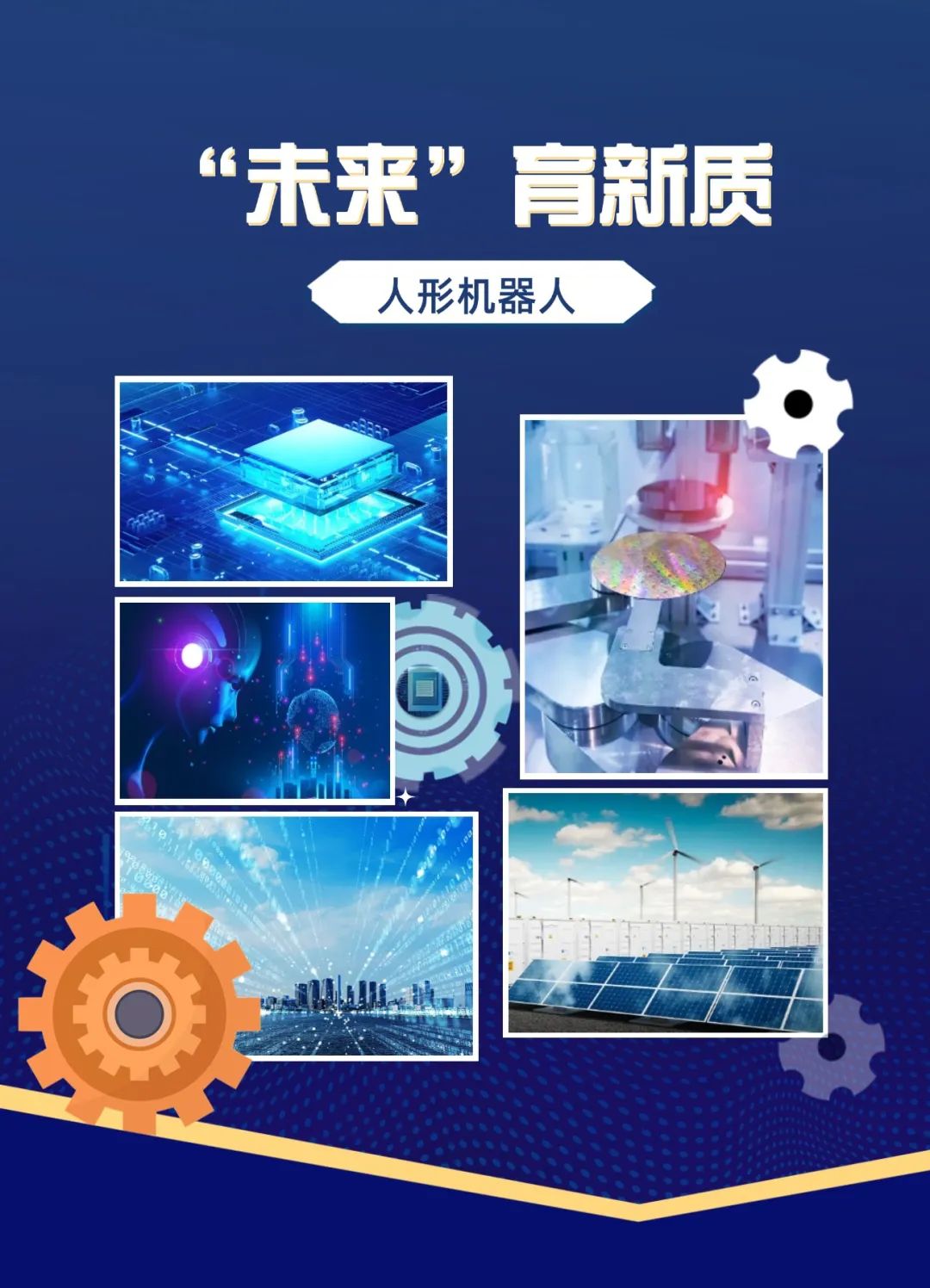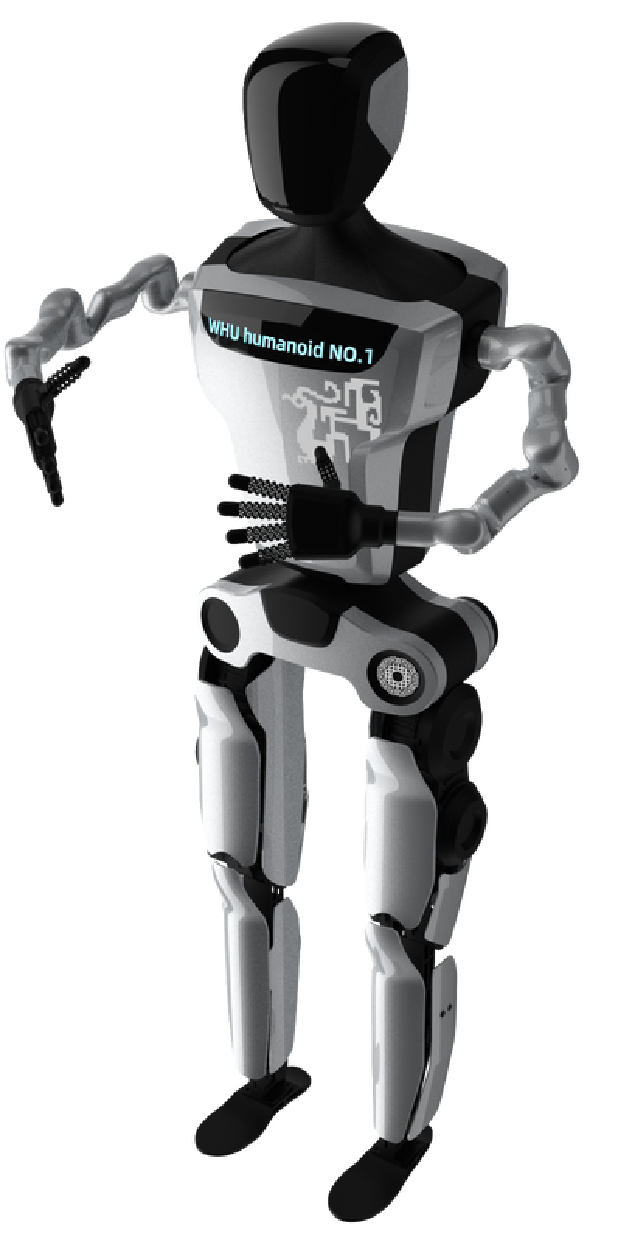


Currently, a new round of technological revolution and industrial transformation is accelerating, with major frontier technologies and disruptive technologies continuously emerging. The integration of technological innovation and industrial innovation is deepening, leading to the emergence of new products and new models. The future industry is developing, becoming a strategic choice to lead technological progress, drive industrial upgrading, open new tracks, and shape new productive forces. Wuhan has sounded the horn for innovative development of future industries, issuing the “Implementation Plan for Promoting Innovative Development of Future Industries in Wuhan,” outlining a clear blueprint for six major directions and 13 sub-fields of future industries. The “Wuhan Economic and Information Commission” public account will delve into the leading enterprises and innovative R&D platforms in various fields of future industries, observing scientific research achievements, directly addressing production scenarios, and listening to innovation stories.
Humanoid robots integrate advanced technologies such as artificial intelligence, high-end manufacturing, and new materials, and are expected to become disruptive products following computers, smartphones, and new energy vehicles. With great development potential and application prospects, they represent a new track for future industries. This year is referred to as the “commercialization year of humanoid robots” by the industry, as humanoid robots accelerate their transition from “laboratory showcases” to commercial applications. According to Goldman Sachs, the global humanoid robot market is expected to reach $154 billion by 2035. The China Business Industry Research Institute predicts that the market size of humanoid robots in China may exceed 300 billion yuan by 2035. National, provincial, and municipal governments are highly attentive and actively planning to promote industrial development.
Relying on Academician Expert Teams
Conducting Whole Machine Project Research
Huazhong University of Science and Technology, Wuhan University, and other universities are at the forefront of the country in fields such as humanoid robot perception and motion control. Currently, our city is leveraging its advantages in scientific innovation and industry, gathering forces from academia, industry, and research, relying on teams of academicians and experts such as Chen Xuedong, Ding Han, and Liu Sheng to lead the R&D breakthroughs of humanoid robot whole machine projects.

Academician Chen Xuedong’s team is leading in the design of heavy-load robot bodies and motion control technology. Wuhan Glrobot Intelligent Technology Co., Ltd. has been deeply engaged in the field of power robots for many years, and the collaboration between academia and industry is tackling the challenge of achieving “high load capacity while keeping the model lightweight.” The humanoid robot project they developed together has completed prototype processing and assembly, achieving stable standing and walking, and can engage in simple conversations with humans, recognizing target objects and their locations according to voice commands. According to the project leader of Glrobot’s humanoid robot, the biggest highlight of this robot is its high load capacity, capable of easily and stably lifting objects weighing 40 kg.
Academician Ding Han’s Team: Humanoid Robot with “High Precision Grasping Ability”
Academician Ding Han’s team has conducted extensive research in areas such as robot joint module motor drive and control, and locomotion control and planning for legged robots. Through multiple iterations, they have developed a humanoid robot prototype that can achieve stable standing, marching in place, and supportive walking, with high precision grasping capabilities suitable for intelligent transformation in scenarios such as pharmaceutical production lines. Meanwhile, the team is also developing core components such as the humanoid robot’s head, anthropomorphic robotic hand, skin, and control system.
Academician Liu Sheng’s Team: “Tianwen” Humanoid Robot with “Agile Limbs”
Wuhan University integrates resources from 11 advantageous disciplines, including computer science, power and mechanical engineering, and surveying and remote sensing, to establish the first robot department in the province. They are collaborating to tackle the challenges of whole machine development. With the complementary advantages of various resources in mechanical design, power control, positioning and navigation technology, and artificial intelligence algorithms, Academician Liu Sheng’s team completed the assembly of the “Tianwen” humanoid robot prototype in just three months and began joint debugging and testing. The “Tianwen” robot features self-developed flexible dexterous hands, with some core indicators at the leading level in the country; the torque of the knee joint can reach 460 Newton-meters, enabling it to perform explosive movements such as walking, running, and jumping. Currently, the team is accelerating the overall design, processing, and software algorithm development of the robot, with plans to apply it in commercial and medical scenarios first.
Building Around the Industrial Chain Supply Chain
Local Core Component Supply System
Our city has certain advantages in the supporting links of force sensors, visual sensors, reducers, and artificial intelligence chips, algorithms, and software. It is leveraging the development of humanoid robot whole machine manufacturing to systematically sort out the industrial chain supply chain and cultivate a number of key enterprises in critical component fields to achieve localized development of the industrial chain supply chain.
Wuhan has gathered key enterprises such as Huawike, Siwei Tech, Wuhan Shendong, Wuhan Henguan Technology, and Prog Technology. Among them, Siwei Tech, a high-precision reducer manufacturer, has led the formulation of three national standards for the robot industry and successfully developed the RV reducer, breaking the foreign technology monopoly, with products applicable to humanoid robot joints.
Wuhan Huawike Intelligent Technology Co., Ltd.
The company focuses on flexible sensing and industrial recognition fields, applying its technical accumulation in the flexible sensor field to the “tactile” perception of humanoid robots, developing several tactile products such as dexterous hand perception and intelligent skin, and has collaborated with multiple leading customers in the humanoid robot industry to achieve small batch shipments. Currently, Huawike has expanded “tactile” perception from fingertips to the palms, soles, and electronic skin of humanoid robots, with plans to integrate spatial perception, multi-dimensional perception, and other multimodal technologies within this year.
Wuhan Henguan Technology Development Co., Ltd.
This company has successfully developed MEMS gyroscopes and MEMS accelerometers, as well as various MEMS inertial navigation and combined navigation systems formed by the devices, applicable to the posture monitoring, mechanical shock monitoring, and complex environment navigation and positioning fields of humanoid robot trunks and joints.
Wuhan has industrial robot companies such as Kobot, Fenzhin Intelligent, and Haimer Robotics, and has also attracted leading enterprises such as Ubtech (Hubei) Technology, Xiaomi (Wuhan), and Qingbo Intelligent (Wuhan), possessing a certain foundation for whole machine R&D.
Wuhan Kobot
Kobot focuses on the intelligent robot brain CobotSys, constructing a closed loop of “platform + application + data,” relying on its independent innovation advantages in deep learning, visual recognition, intelligent grasping, and intelligent force control technologies. It aims to meet the broad market demands of digitalization and intelligence in the entire process of drug circulation and ultrasonic examination, creating a matrix of precision medical products, including drug circulation, ultrasonic examination, and specialized surgical robots.
Heizhima Intelligent, Huazhong Numerical Control, Wuhan Artificial Intelligence Research Institute, Peking University Wuhan Artificial Intelligence Research Institute, Chuanxin Language Network, and Landing Intelligent have certain technological foundations and achievements in application software, control systems, general large models, and vertical industry large models, able to support the R&D of humanoid robot intelligent operating systems and embodied intelligence technologies.
Wuhan Huazhong Numerical Control Co., Ltd.
This company was the first in the world to implant artificial intelligence chips into numerical control systems, rapidly generating numerical control processing codes, achieving human-machine interaction and remote operation and maintenance, and has the prototype of intelligent robots. In terms of robot products, it focuses on developing industrial robots, innovative new structure robots, and industrial-grade collaborative robots for segmented fields.
Robots are accelerating their promotion and application in intelligent manufacturing, healthcare, special environments, and urban governance sectors.
In the Intelligent Manufacturing Sector
Wuhan Fenzhin Intelligent Machinery Co., Ltd. focuses on the liquor brewing field and has launched a series of artisan robot products such as the steaming robot, fermentation tank robot, and wine picking robot, supplying a large number of distilleries nationwide.
In the Healthcare Sector
Wuhan Kobot Technology Co., Ltd.’s pharmacy automatic replenishment and sorting and distribution robots have been applied in several medical institutions, achieving full-process intelligence in drug storage, dispensing, and distribution. Wuhan Landing Intelligent Medical Co., Ltd. completed cervical cancer screenings for 5.26 million women within two years using an intelligent scanner + AI cloud diagnosis platform model, receiving recommendations from the World Health Organization.
In the Urban Governance Sector
Wuhan Zhongyi IoT Technology Co., Ltd.’s pipeline inspection and repair robots can accurately detect the health status of pipelines through high-definition anti-fog lenses and artificial intelligence recognition technology, providing strong support for urban pipeline maintenance.
Currently, Wuhan is driven by innovation, actively seizing the high ground of humanoid robot innovation, researching and supporting work plans for humanoid robot industry development, allocating at least 4 billion yuan annually for industrial funds to support investment in future industries, including humanoid robots, and establishing a 3 billion yuan digital economy industrial fund focusing on artificial intelligence and robotics. It is accelerating the construction of a national pilot zone for innovative applications of artificial intelligence and a national experimental zone for the innovative development of the new generation of artificial intelligence, focusing on laying out the humanoid robot industry in areas such as East Lake High-tech Zone, Wuhan Economic Development Zone, and Jianghan District.
In the next step, Wuhan will focus on key areas of technology breakthroughs, product breakthroughs, entity cultivation, scenario applications, and ecological optimization in humanoid robots, with hardware breakthroughs focusing on whole machines to accelerate the “whole machine” product launch, and software focusing on large model technology to create a development ecosystem that combines software and hardware; focusing on intelligent manufacturing, smart healthcare, and smart logistics to fully expand application scenarios; increasing efforts to attract, train, incentivize, and serve talents in the humanoid robot field, supporting the construction of disciplines in related professional fields in universities; leveraging government investment funds to attract more social capital for the research, promotion, and application of new products and technologies; scientifically laying out the computing power for humanoid robots, accelerating large model training iterations and product applications, and improving information infrastructure to create a favorable ecosystem for industrial development.
